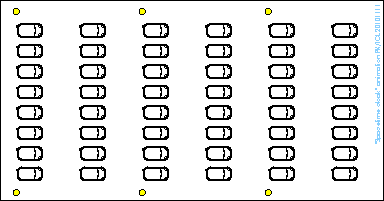
The concept of event cloaking works like this:
[B]asically, you need two time-lenses–lenses that can compress and decompress light in time. This is actually possible to do using an electro-optic modulator (what, you don’t have one?). Basically, using two of these modulators you would slow down or compress the light traveling through the first lens, and then set up a second lens downrange from the first that would decompress, or accelerate, the incoming photons from the first lens.
I’m right beside anyone who can’t stand animated gifs, but this one is important so I included it here. Imagine space-time as a constant flow of traffic. Imagine events as chickens who need to cross the road but normally can’t because, you know, constant flow of traffic. But if you take some of those cars (time) and slow them down, you get a gap (hole) that can be crossed by a well-timed chicken (event). To an observer located downstream of the chicken (event) who crossed the road (space-time), no chicken ever existed.
Though Fridman and team are deservedly stoked about their design, they are reluctant at this point to discuss applications for it. As of right now, the gap in traffic only lasts 110 nanoseconds. The team claims their limit with this design will be 120 microseconds. That said, this is the first ever functioning cloak, so those numbers could change in the time it takes an event to cross space-time.
For a detailed and considerably more technical explanation of the Cornell team’s research, check out the article at Technology Review.

